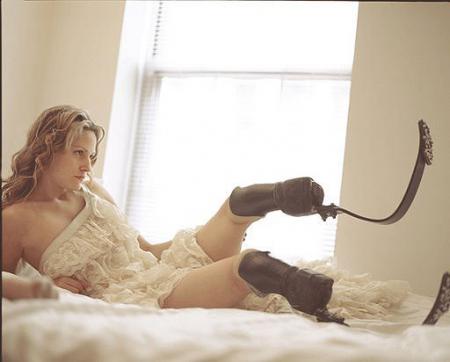Serendip is an independent site partnering with faculty at multiple colleges and universities around the world. Happy exploring!
Making Disability "Palatable"

In reading through the notes for the “Cripping Sex and Gender” disability panel, I came across class notes from when Kristin taught the course that included images of Aimee Mullins (/exchange/courses/gas/f09/archive/15). I was struck by these images, and reminded of Wilchin’s discussion of the gender in relation to sexuality and the gay movement- how the gay rights movement has tried to “normalize” homosexuality by presenting with the idea that gays and lesbians are just like everyone else (i.e. the image of the monogamous, masculine (but not too masculine) gay couple with two dogs and a house with a white picket fence.) Wilchins argues that though these images have had success in bringing homosexuality into mainstream culture, they ultimately fail to challenge the underlying issue- gender. Creating this new, more “palatable” gay failed to challenge the underlying gender stereotypes that form the foundation of sexual-based discrimination.
Looking at the pictures of Aimee Mullins, I am bombarded by the similarity of these two situations. In these sexualized images, her beauty comes through as a form of “supercrip”- holding her up as an example of the beauty and femininity that a disabled individual can achieve. Her photographs do not seem to challenge the distinction between able and disabled bodies as a black and white dichotomy (akin to the gender binary according to one panelist.) Instead, her disability appears more palatable due to the proper performance of her heterosexual femininity. Mullin’s “supercrip” status implies that correctly performing gender, sexuality, and beauty is a notable achievement for someone with a disability. Eli Claire’s frustration of the perceived asexuality of the disabled would certainly make it seem so. However, I cannot get past the idea that making disability more palatable for the general population diminishes the complexities of the lived experience of the “disabled body.” Though such images may bring the “disabled body: into mainstream culture, it still submit to the dichotomous separation of abled and disabled bodies.



